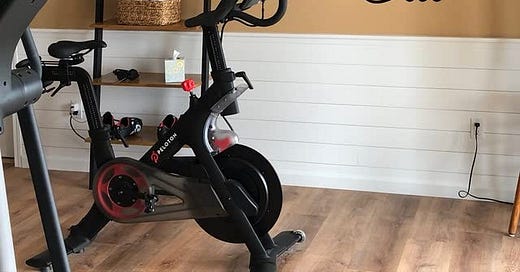Why Peloton and Weight Watchers Are the Fast Food of Fitness
Are we really still falling for it? Let’s dive into why Peloton, Weight Watchers, and the whole wellness industry are built on mind-blowing hype, sky-high salaries, and what might just be a solid dose of smoke and mirrors.
Peloton Pays Top Dollar—To Shout at You on a Bike
Ever sat on a Peloton and thought, “Wow, that trainer’s yelling at me with some serious conviction”? Well, it turns out there’s a six or seven-figure salary backing all that enthusiasm. Some Peloton trainers reportedly make as much as $750,000 a year, with a few rare ones crossing the million-dollar mark. And yet, their entire shtick? Cycling in place to loud, bass-heavy music. Sound familiar? SoulCycle, spinning, heck, that old exercise bike collecting dust in the basement? It’s all essentially the same.
And here’s the kicker: compare that with the salaries of teachers or nurses. People helping save lives and shape minds don’t see anywhere near these numbers, but Peloton found a way to sell the idea that sitting on a bike with a screen is worth every penny. All it took was one marketer saying, “Wouldn’t it be cool if you could do SoulCycle at home?” Voila. A new empire was born, with investors and users alike hopping on.
The Wellness Industry: From Weight Watchers to Weight of Wallets
Let’s take a spin back to 1963, the year Weight Watchers took off, promising people a new lease on life with…”nutrition.” They were raking in billions, convincing people to pay for the privilege of weighing less. But even Weight Watchers had to change it up—they dropped “Weight” from the name to just “WW” as the word “weight” itself became a no-no
Despite all this, the wellness industry has ballooned into a $3 trillion monster. Meanwhile, in the U.S., about 65% of adults are obese. Some people are gobbling up health advice on the street while munching “nourishing” snacks, calories stacked upon calories. But it’s not their fault entirely—this is brilliant marketing at work.
The Unchanging Science of Cycling Classes
Remember when spinning classes launched back in 1993? They had to jazz up the experience with dimmed lights, candles, and surround sound—basically making stationary biking feel like a rave. Fast forward to today, and Peloton and other brands are selling us the same old “mind-body” experience, but now with app-based leaderboards, high-fives from digital strangers, and trainers who look like they were born on an Instagram filter.
The workout routine? Still a warm-up, peak intensity, and cool-down. Sure, the trainers have their own personalities, but if you shut off the screen and just listened, would you really know one from the other?
Enter Peloton: Bringing Together the Couch, Friends, and FOMO
Here’s where Peloton really nailed it. They figured out how to make you feel like you’re joining a community without leaving your house. You’re suddenly in a “Peloton family,” with instructors grinning through the screen, giving shout-outs to riders they’ve never met, and high-fiving every milestone. And yes, there are shout-outs and high-fives for every single minute you survive without flopping over. It’s the ultimate ego boost—“At least I’m not on the couch!”
Marketing Magic: How Peloton Turned a Bike into a Lifestyle
The Peloton lifestyle isn’t just about fitness; it’s about joining an exclusive club where every trainer is a star. Sure, they all have that same Peloton smile and say the same things—“Welcome to the community!” But to users, that $750,000-smile feels like it’s just for them. And to Peloton, it’s a key ingredient in the recipe for big bucks.
Weight Watchers, the OG of Fitness Hype, Is in Trouble
Weight Watchers has been around since ‘63, but now they’re in a tight spot. The game has changed, and their “count calories, lose weight” model just doesn’t cut it in a world where phony wellness sells better without the weight focus. We’ll see if they make it or fold like so many other fads, but one thing’s clear—their heyday is behind them. WW stock in 2018 was $103.00 a share. Today… $1.00 a share. At least something slimmed down.
So, what’s the bottom line? The fitness and wellness industry is like fast food—flashy, but lacking real substance. And just like fast food, there is now a fast way to fix your bod: Hello Ozempic!!




